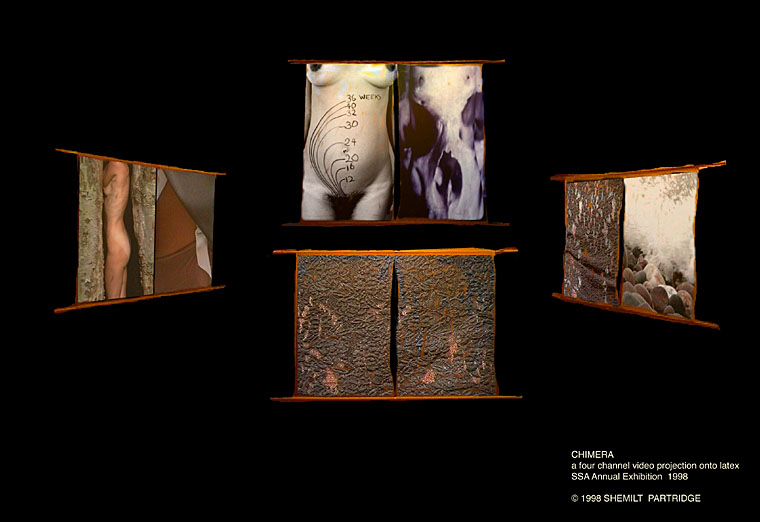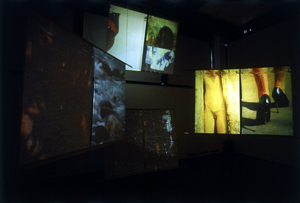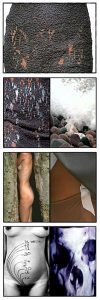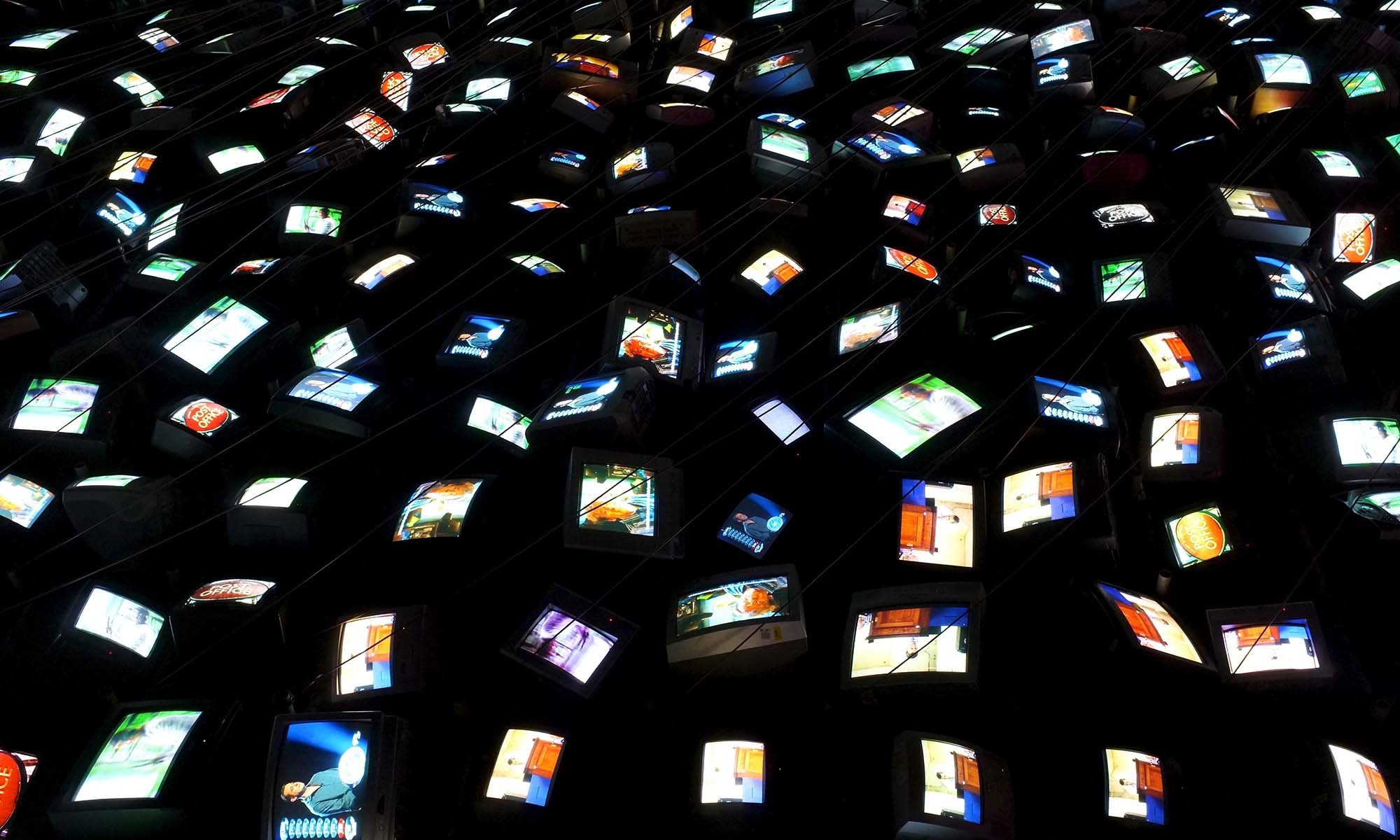Chimera (1998 – Installation)

Creator:
Partridge, StephenContributor(s):
-
Duration: looped
Year: 1998
Original formats:Betacam SP
Media types:Video
Type of work:Installation
First exhibited: SSA (Scottish Society of Artists) Annual Exhibition 1998 at the Royal Scottish Academy, Edinburgh, October 1998.
Technical details: A seven channel installation for four video projections onto suspended latex screens with stereo sound. Equipment requirements: Four VCRs, Four video projectors capable of 1.5 x 2 metre sized projection; Stereo Sound Amplifier and four speakers; Chains and hooks to suspend screens; Latex Screens on poles.

An installation by Elaine Shemilt and Stephen Partridge. A 4 projector installation onto Latex – joint work with Elaine Shemilt- originally shown at the SSA (Scottish Society of Artists) Annual Exhibition 1998 at the Royal Scottish Academy, Edinburgh, October 1998. Winner of the ADOBE SYSTEMS EUROPE Prize.
Context. – Within a sexually differentiating society all our experiences are shaped to a greater or lesser extent by socially determined gender positions.The body of a woman is colonised, appropriated, mystified, defined by male fantasy, but for an audience of women the same body can represent fertility, childbearing, or sexuality. This piece explores these representations as a differentiation from sexist usage. By exposing the patriarchal assumptions embedded within what we so often take for granted as normal or obvious, other ways of seeing and feeling are liberated. This work which reflects attitudes through certain acts and imagery also recognises a level of gratuitous nudity . There is the question of where this transgresses an unwritten code of what a reasonable person might take to be decent?
There are elements in this installation which have definite and clear connotations within distinct cultural references. There are particular codes to produce meanings but the aim of this installation is to create new meanings. The traditional, coherent systems of meaning are broken and re-articulated. The use of language is intended as a further deconstruction of the current order of meaning so as to make a space for questions about an adult person’s actual social, biological, or psychological experience. The four channels of video each project two images upon the latex screens. The images are close-ups of part of a female body – not necessarily immediately recognisable as such and moving slowly. They have a ghostly ethereal atmosphere and quality. A multi-track soundtrack whispers a series of dreams quite unlike stories told by a concious mind. Images that seem contradictory crowd in and common-place things assume a fascinating or threatening aspect.

-
Quotes:
“In the video installation Chimera, Partridge and Shemilt offer yet another deconstruction of male desire as it manifests itself in the representation of the female. The structure of the installation, in terms of both its individual elements and their relation to each other, might be thought of as embodying a linguistic model of the kind considered earlier. Each of the projected images, for example, extends syntagmatically through time, and their refusal of narrative resolution parallels the infinite deferral of meaning in language. Certain of the images – waves on the pebbly beach, say – could almost seem to suggest the repetitive, frustrated surge of desire through language and vision.
Alongside the mechanisms of anticipation, recollection and repetition which these anti-narrative elements employ, there are further dimensions of recollection and repetition at play: many of the images are themselves a “reworking” of Shemilt’s earlier work. Equally, the relation of these constituent elements to each other – to the overall ensemble of the work – could be thought of as paradigmatic (they present themselves simultaneously, rather than sequentially, as options). The principles of montage and juxtaposition which inform the installation (images abutting on a physically split screen; the relations between the various images on the different screens) might also be read figuratively as symptomatic of the cuts and gaps through which language and desire erupt. Pleasure, claimed Roland Barthes, is always achieved by cutting. What pleasure wants is the site of a loss, the seam, the cut, the deflation, the dissolve which seizes the subject in the midst of bliss.Uniting this economy of discontinuities is a continuous voice-over, a screen of language through which all the visual projections are filtered. Whispered and withdrawn, the female voice utters fragments (again, fragments) from a range of disparate discourses – sociological, poetic, philosophical, psychoanalytic, medical – but one phrase repeats: The body of a woman is colonised, appropriated, mystified, defined by male fantasy. Chimera, however, works to undercut the ambitions of this fantasy. If the female body was absented, cancelled in Intangible Bodies – returned to the digital ether of cyberspace – here it is everywhere, before and around us – and yet by its polymorphous presence (pregnant, naked, clothed, symbolised, speaking) it remains largely elusive, refusing to be an “it”, a singular vessel onto/into which the male can project his possessive desires. This refusal operates not only on the level of the ensemble, but also within some of the individual images, especially those which are hard to decode, difficult to “read”. Once recognised, however, the fetishistic aspect of these images kicks in as they magnetise sexual desire in the same gesture which displaces and deflects it.” – JOHN CALCUTT



